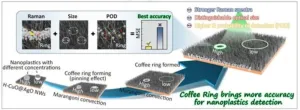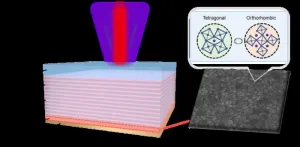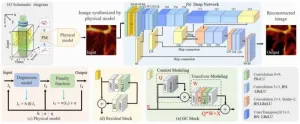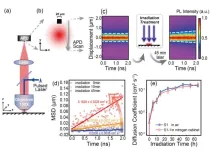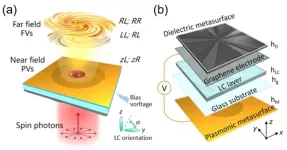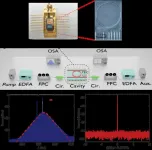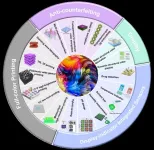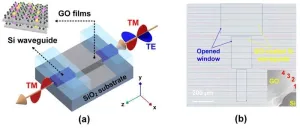Center for Open Science launches collaborative health research replication initiative
2025-04-10
(Press-News.org) Charlottesville, VA — The Center for Open Science (COS) has announced the launch of the Replicability Project: Health Behavior (RPHB), a collaborative initiative that aims to strengthen the evidence base and advance scientific integrity in health-related research. The project will examine the replicability of a diverse sample of quantitative health studies published over the past decade (2015–2024).
Assessing the credibility of research is essential to advancing scientific integrity and maintaining public trust in science. The RPHB initiative aims to perform up to 60+ replications of empirical health behavior studies, providing crucial evidence about the reliability of findings that impact public health decisions and interventions.
"Replication is a cornerstone of scientific advancement, particularly in health research where findings directly influence public well-being and policy decisions," said Tim Errington, Senior Director of Research at COS. "This project creates an opportunity for researchers to collectively strengthen the foundation of health science while fostering a culture of transparency and rigor that benefits the entire research ecosystem.”
The RPHB effort will assess studies published in six influential journals: Journal of Health Communication, Social Science & Medicine, Journal of Public Health, Applied Research in Quality of Life, American Journal of Health Promotion, and Annals of Behavioral Medicine.
The project builds upon COS's previous replication efforts (Systematizing Confidence in Open Research and Evidence, Reproducibility Project: Cancer Biology, and Reproducibility Project: Psychology), which have generated extensive datasets of claims and evidence about research credibility.
The RPHB invites researchers to participate in two ways:
Conducting replications of original studies by investigating the same empirical claims using new or independent secondary data
Serving as peer reviewers or editors for replication protocols to ensure methodological rigor and transparency
All replication studies will utilize the Open Science Framework (OSF) throughout their lifecycle, with preregistration, open sharing of materials and data, and transparent reporting of outcomes.
Researchers interested in participating—either as replicators or peer reviewers—can express their interest immediately. All replications must be completed by January 31, 2026. The project provides resources and potential funding for qualified replication teams.
For more information about the Replicability Project: Health Behavior, visit www.cos.io/rphb.
###
About COS
Founded in 2013, COS is a nonprofit culture change organization with a mission to increase openness, integrity, and reproducibility of scientific research. COS pursues this mission by building communities around open science practices, supporting metascience research, and developing and maintaining free, open source software tools, including the Open Science Framework (OSF).
Media Contact: pr@cos.io
END
ELSE PRESS RELEASES FROM THIS DATE:
2025-04-10
CHICAGO – The American Association for Cancer Research (AACR)-Cancer Research Institute (CRI) Lloyd J. Old Award in Cancer Immunology will be presented to Crystal L. Mackall, MD, Fellow of the AACR Academy, during the AACR Annual Meeting 2025, to be held April 25-30 at the McCormick Place Convention Center in Chicago, Illinois.
Mackall is the Ernest and Amelia Gallo Family Professor and Professor of Pediatrics and Medicine at Stanford University, the founding director of the Stanford Center for Cancer Cell Therapy, and director of the Parker Institute for Cancer Immunotherapy at Stanford. She is being honored for her illustrious contributions to cancer immunotherapy, including ...
2025-04-10
A new publication from Opto-Electronic Advances; DOI 10.29026/oea.2025.240260 discusses a novel strategy for detecting trace-level nanoplastics in aquatic environments.
Plastic materials have revolutionized human lifestyles through their versatile applications, yet their environmental legacy now presents critical challenges to global ecosystems and public health. Current models estimate annual plastic influx into aquatic systems at 4.8-12.7 million metric tonnes, with projections suggesting cumulative marine plastic accumulation ...
2025-04-10
A new publication from Opto-Electronic Advances; DOI 10.29026/oea.2025.240220, discusses how phase-change perovskite enables traditional VCSEL to achieve low-threshold, tunable single-mode lasers.
As an important light source, lasers are widely used in many fields such as communications, medical treatment, display technology and scientific research. However, with the continuous advancement of technology, people have put forward higher requirements on the performance of lasers, especially in terms of integration and tunability. Traditional lasers typically rely on fixed gain media and external microcavity structures (such as Fabry-Perot cavities, ...
2025-04-10
A new publication from Opto-Electronic Advances; DOI 10.29026/oea.2025.240189, discusses enhanced photoacoustic microscopy with physics-embedded degeneration learning.
In recent years, photoacoustic imaging (PAI), as an emerging imaging technology, has gradually attracted widespread attention across various fields, particularly in interdisciplinary areas such as medicine, physics, and chemistry. In brief, PAI combines the unique advantages of both optics and acoustics. The fundamental principle of PAI is as follows: when laser light ...
2025-04-10
A new publication from Opto-Electronic Advances; 10.29026/oea.2025.240207, discusses how light boosts exciton transport in organic molecular crystal.
Organic semiconductors, composed of organic molecules or polymers, offer advantages such as low cost, flexibility, lightweight design, and tunable structural-functional properties. They have significant applications in OLED displays (e.g., smartphones, TVs), organic photovoltaic cells (flexible solar panels), and flexible sensors. In organic semiconductors, excitons—carriers of excited-state ...
2025-04-10
A new publication from Opto-Electronic Advances; DOI 10.29026/oea.2025.240250, discusses on-chip multi-channel near-far field terahertz vortices with parity breaking and active modulation.
Vortex beams with helical phase wavefronts can carry orbital angular momentum (OAM) and have promising applications in high-capacity communication, information processing and high-resolution imaging. With the further development of terahertz (THz) technology in the fields of communication, radar and substance detection, ...
2025-04-10
A new publication from Opto-Electronic Advances; DOI 10.29026/oea.2025.240257 , discusses generation of avoided-mode-crossing soliton microcombs.
Optical frequency combs refer to spectra composed of a series of frequency components that are uniformly spaced, resembling the teeth of a comb, thus the term "optical frequency comb." In recent years, optical frequency combs generated in microresonators (known as microcombs) have attracted significant attention due to their high repetition rates, broad bandwidths, ...
2025-04-10
A new publication from Opto-Electronic Sciences; DOI 10.29026/oes.2025.240030, discusses unlocking the vibrant photonic realm.
Nature not only provides humans with abundant material resources but also offers rich colors, satisfying both material and spiritual needs. The vibrant and diverse colors displayed by peacock feathers, opals, and beetles are all a result of the exquisite structural colors found in nature. The micro- and nanostructures on their surfaces interact with light, producing phenomena such as diffraction, scattering, ...
2025-04-10
A new publication from Opto-Electronic Sciences; DOI 10.29026/oes.2025.240032 , discusses integrated photonic polarizers with 2D reduced graphene oxide.
In modern optical systems, controlling light polarization is of fundamental importance and underpins a variety of advanced optical technologies. Optical polarizers, which selectively transmit light with a specific polarization orientation while blocking light of the orthogonal polarization, are essential components underpinning modern optical systems for a diverse range of applications. The applications are divided into ...
2025-04-10
Shoulders are, in many ways, a marvel. One shoulder has four separate joints, packed with muscles, that allow us to move our arm in eight different major ways, giving us the most degrees of freedom of any joint in the body. We can swim, toss, hug, and even punch because of the movement our shoulders enable.
But the same complexity that allows us such motion also presents opportunities for pain when something goes wrong. Another complication: shoulders change as we age, and new types of injuries come with it. Clinical practitioners ...
LAST 30 PRESS RELEASES:
[Press-News.org] Center for Open Science launches collaborative health research replication initiative
